
Basilica Ulpia in Rome: History Facts & Tips for Visiting
Planning to explore the Basilica Ulpia in Rome? This guide gives you all the key information on how to visit the Basilica Ulpia in Rome, including where to find it, how to get there, and what to look out for during your visit to this ancient site in the heart of the city.
Once the largest basilica in ancient Rome, the Basilica Ulpia stood proudly in the Forum of Trajan. Learn about its rich history, its impressive size, and the role it played in Roman public life. Discover what remains today and how to make the most of your visit to this important monument of the Forum of Trajan.
Contents
- 1 Do You Need Tickets for Visiting Basilica Ulpia?
- 2 Basilica Ulpia Location & How to Get There
- 3 Basilica Ulpia Opening Hours
- 4 Basilica Ulpia Plan
- 5 What Happened to the Basilica Ulpia in Rome?
- 6 Basilica of Ulpia Exterior: Was It Beautiful?
- 7 Basilica Ulpia Reconstruction
- 8 What Characterizes the Architecture Basilica Ulpia?
- 9 What Is the Basilica Ulpia Made of?
- 10 Who Built the Basilica Ulpia?
- 11 What Was the Basilica Ulpia Used for?
- 12 Basilica Ulpia History
- 13 What Else You Can See at Trajan’s Forum?
- 14 Top Attractions near Basilica Ulpia in Rome
- 15 Frequently Asked Questions
- 16 Conclusion
Do You Need Tickets for Visiting Basilica Ulpia?
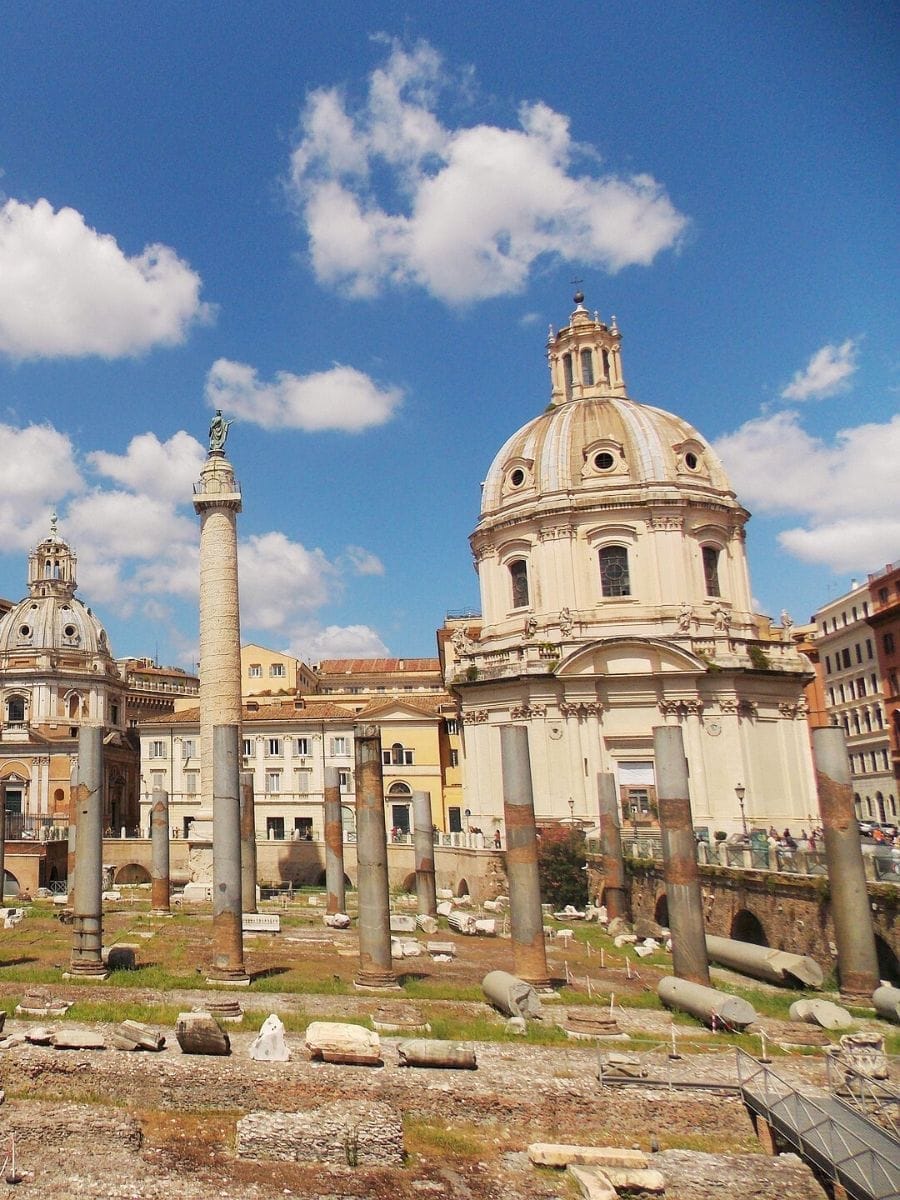
You can get tickets for entry to the Trajan Forum at the gate, starting from around €12 euros per adult with reduced entry for children.
You may however get more value from the experience if you enter the complex as part of a guided tour.
Check out an example here of this cool Ebike tour which takes in a multitude of attractions in Rome including a stop at Trajan’s Forum!
And if you want more detail, perhaps you’ll want to consider a private tour of the complex such as this one.
Basilica Ulpia Location & How to Get There
The Basilica Ulpia is one of the most remarkable landmarks of Trajan’s Forum, just a short walk from Piazza Venezia and the Colosseum.
You’ll naturally pass by the Basilica Ulpia while visiting the Trajan’s Column, the Markets of Trajan, and the Forum of Augustus nearby. Its central location also makes it easy to combine with a visit to the Roman Forum or the Colosseum on the same day.
Getting to the Basilica Ulpia is simple thanks to its central position in Rome:
- By metro: Take Line B (blue line) and get off at Colosseo station. From there, it’s about a 10-minute walk north to Trajan’s Forum, where the Basilica Ulpia stands.
- By bus: Many city buses stop near Piazza Venezia, including lines 40, 60, 64, 70, 80, and 170, all just a few steps from the forum entrance.
- On foot: If you’re exploring the historic center, you can easily reach the site in under 10 minutes from Piazza Venezia or Capitoline Hill.
You can check the exact Basilica Ulpia location on Google Maps below.
Basilica Ulpia Opening Hours
The archaeological area is open daily from 9:30 am to 7:30 pm, with last entry at 6:30 pm. It is closed on Christmas Day, New Year’s Day, and May 1, and closes early on Christmas Eve and New Year’s Eve.
Tip : Visit early in the morning or around sunset for softer light and fewer crowds, it’s the best time to appreciate the ancient columns and take beautiful photos of Trajan’s Forum.
Basilica Ulpia Plan

Get an idea for the structure of the Basilica Ulpia with this plan.
Here you can see the location of the Basilica within the wider Forum of Trajan, with its distinctive semi-circular apses on either end.
What Happened to the Basilica Ulpia in Rome?

Today, the remains of the spectacular Trajan’s Basilica Ulpia consist of the remnants of some of the columns, with the column of Trajan still standing proudly amongst the ruins.
Eventually, the legal and commercial functions of the Basilica were transferred to the newly built Basilica of Maxentius in 312 AD. As the Middle Ages got underway, it collapsed a little, and was largely demolished.
As was common in Rome throughout its history, the stones and marbles were reused in order to build other structures in the area.
Basilica of Ulpia Exterior: Was It Beautiful?
The striking gray and yellow marble columns offset with gilded statues of Trajan and the spoils of war made for a beautiful appearance.
The bronze roof added to the scene, leading a passing traveler, Pausanius, to comment specifically on its splendor. Walking up across the square of white marble, it surely was a striking sight.
Basilica Ulpia Reconstruction
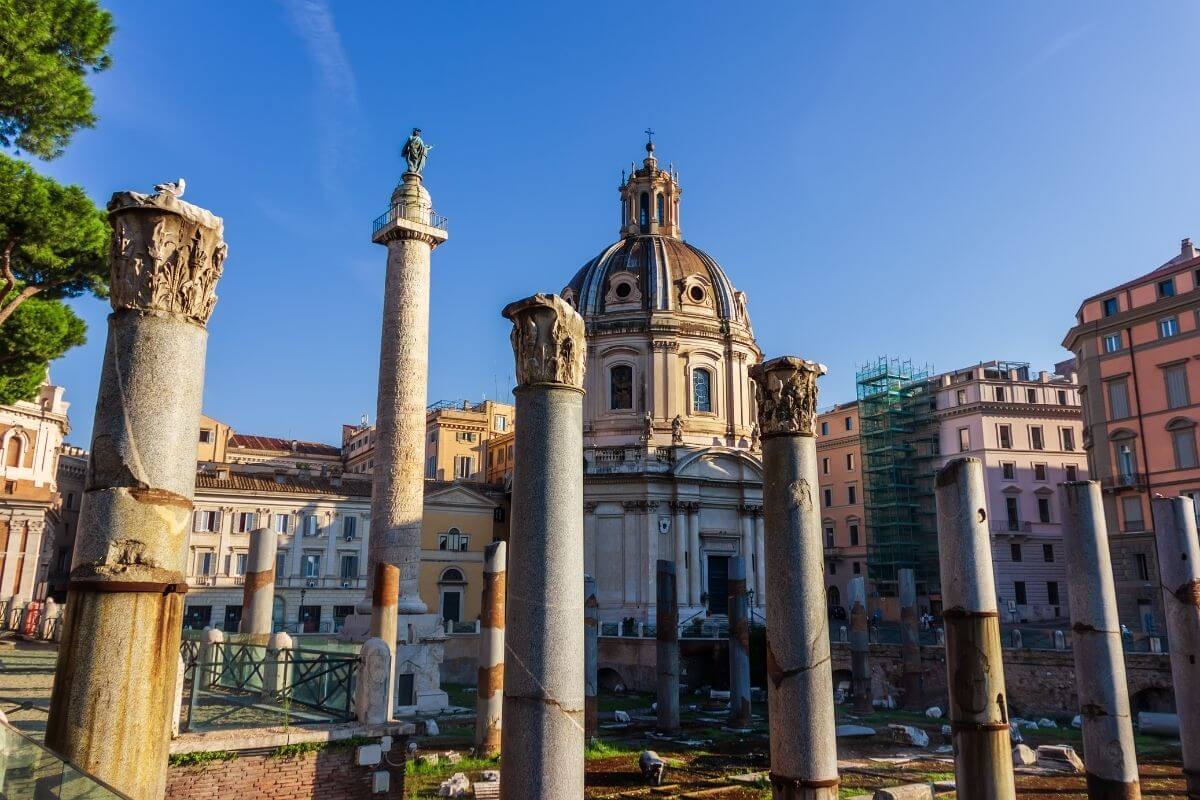
In 2014, plans were launched for the reconstruction of the Basilica Ulpia to its former glory. Costing an estimated 1.5 million euros, largely donated by Alisher Usmanov, an Uzbek businessman, works began in 2021.
What Characterizes the Architecture Basilica Ulpia?
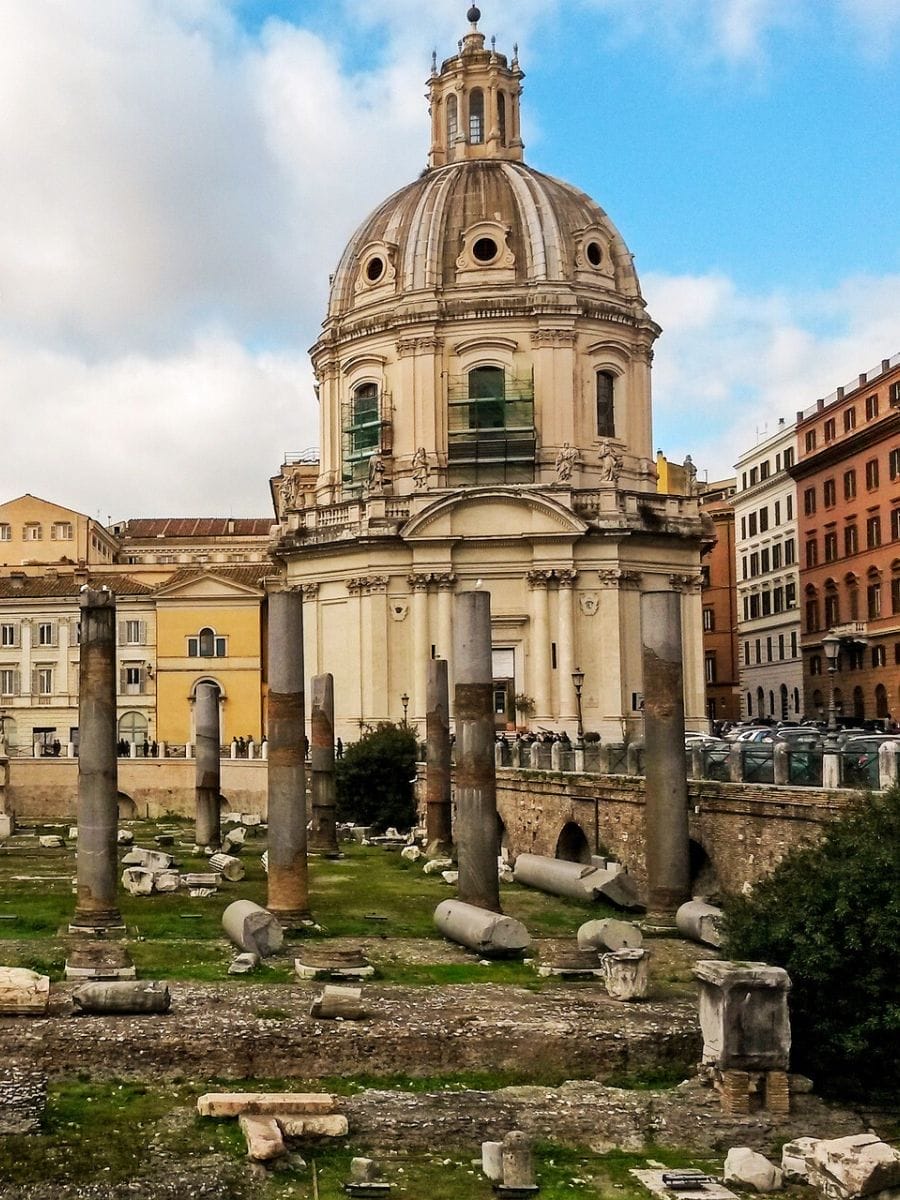
At almost 60 meters wide and 159 meters wide, the Basilica is designed with a huge central nave, alongside which run four side aisles.
At 40 meters high it was designed to show the importance of the function of the Basilica. A second floor above the main hall was constructed so that spectators could watch any proceedings that were going on in the courts below.
One of the main and striking features of the Basilica Ulpia was its collection of grand columns throughout the building which supported the roof.
What Is the Basilica Ulpia Made of?
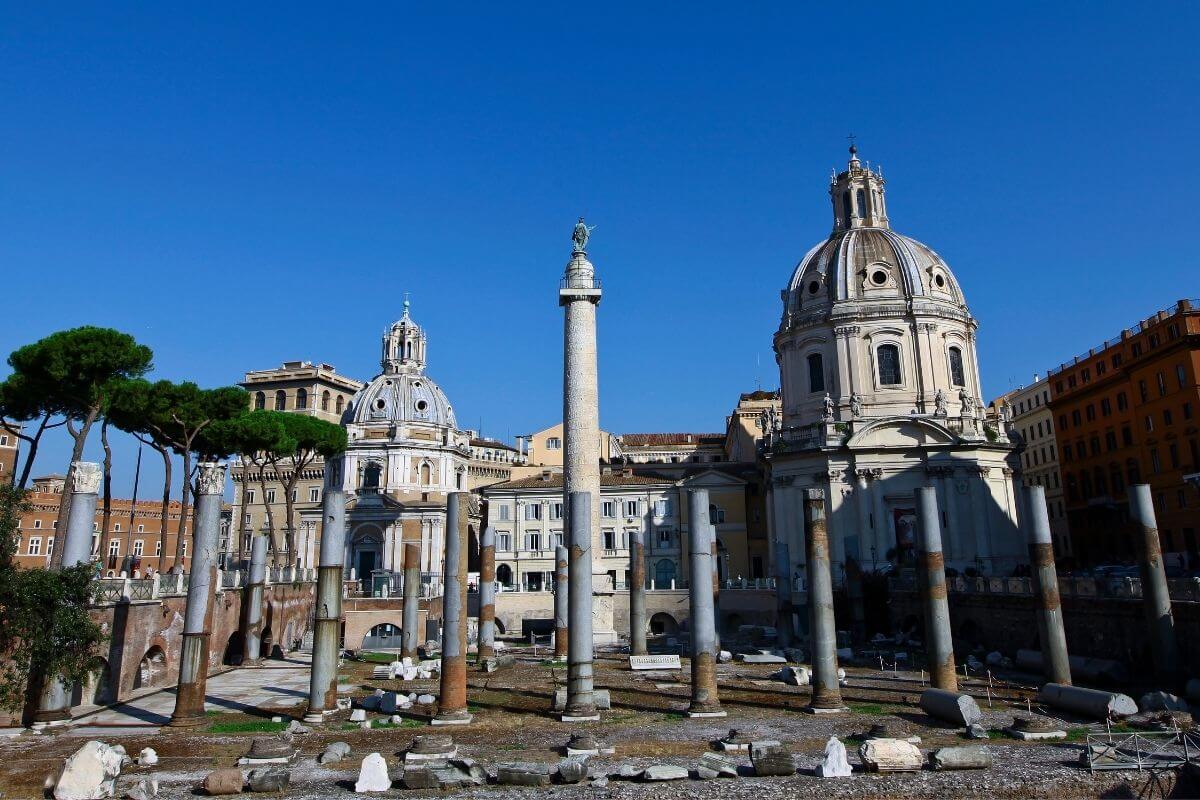
The large square at the Forum of Trajan was clad in spectacular white Italian marble. The Basilica itself had columns of gray Egyptian granite, with a stunning floor of different colors of marble.
On the roof, bronze tiles would have made for a brilliant sight, and the main porch was held up by yellow marble. All in all, the Basilica was a striking display of design and triumph for Trajan.
It was decorated with the spoils of victory and wars, and many of its impressive columns still stand to this day.
Who Built the Basilica Ulpia?
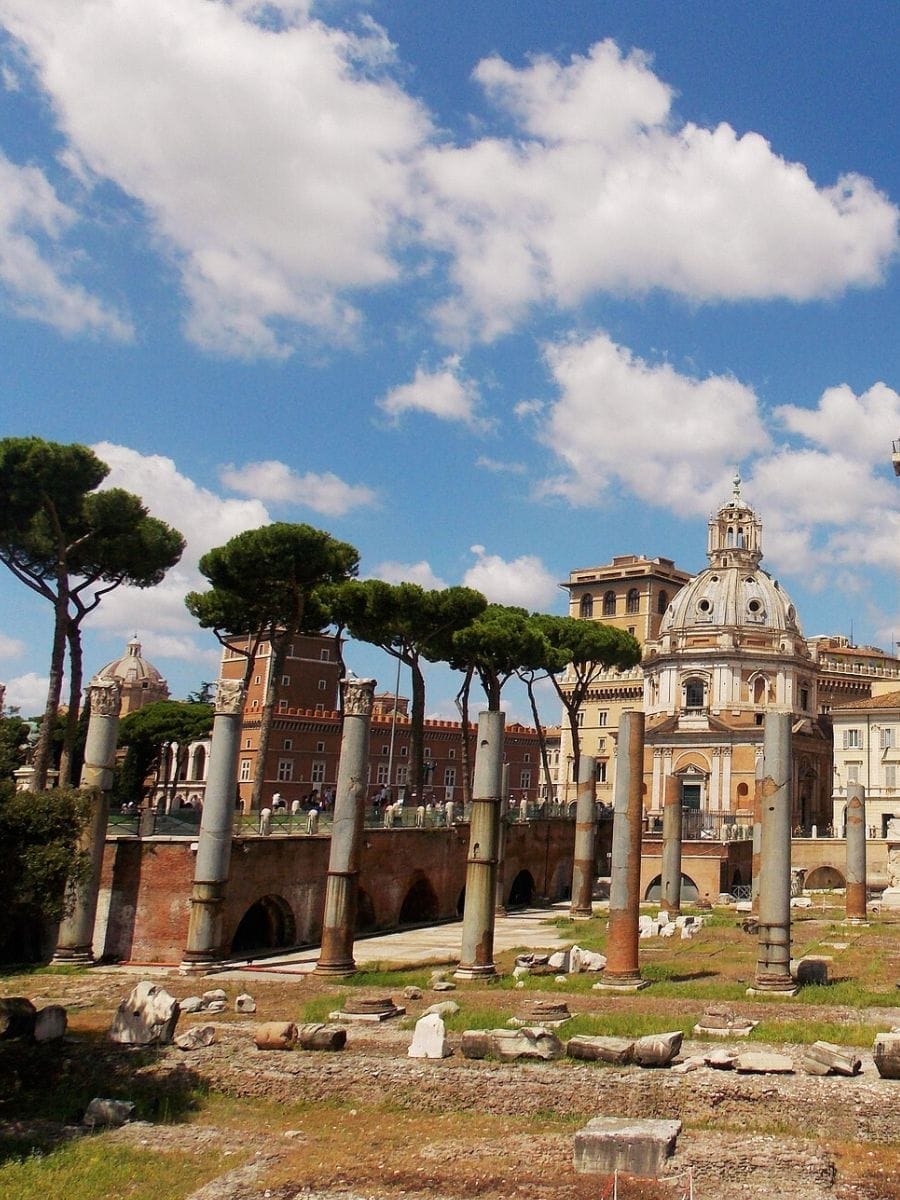
The Emperor Trajan built the Basilica Ulpia – and the wider Forum of Trajan complex – in order to display his power.
He had just won the Dacia war, so there were plenty of spoils to be displayed in its impressive structure, as well as to fund the structure.
The Basilica Ulpia architect was Apollodorus of Damascus. He was also responsible for the design of the entire Forum of Trajan design as well as the impressive square.
What Was the Basilica Ulpia Used for?
Unlike other Basilicas you may have heard of – such as the famous St Peter’s Basilica – the Basilica Ulpia seems to not have been used for any religious purposes.
Rather, it served as a symbol of the presence of the Emperor, as well as courts for legal proceedings. It was a place for justice administration as well as commercial activities inside its large covered hall.
Basilica Ulpia History

Commissioned by the Emperor Trajan along with the Forum of Trajan and completed in 112 AD, the Basilica held numerous law courts and civic buildings.
Trajan of course wanted to design something spectacular so that he could be remembered for his impact on Roman history. Thus, the Forum of Trajan and the accompanying Basilica Ulpia – as well as the Column of Trajan – were born.
What Else You Can See at Trajan’s Forum?
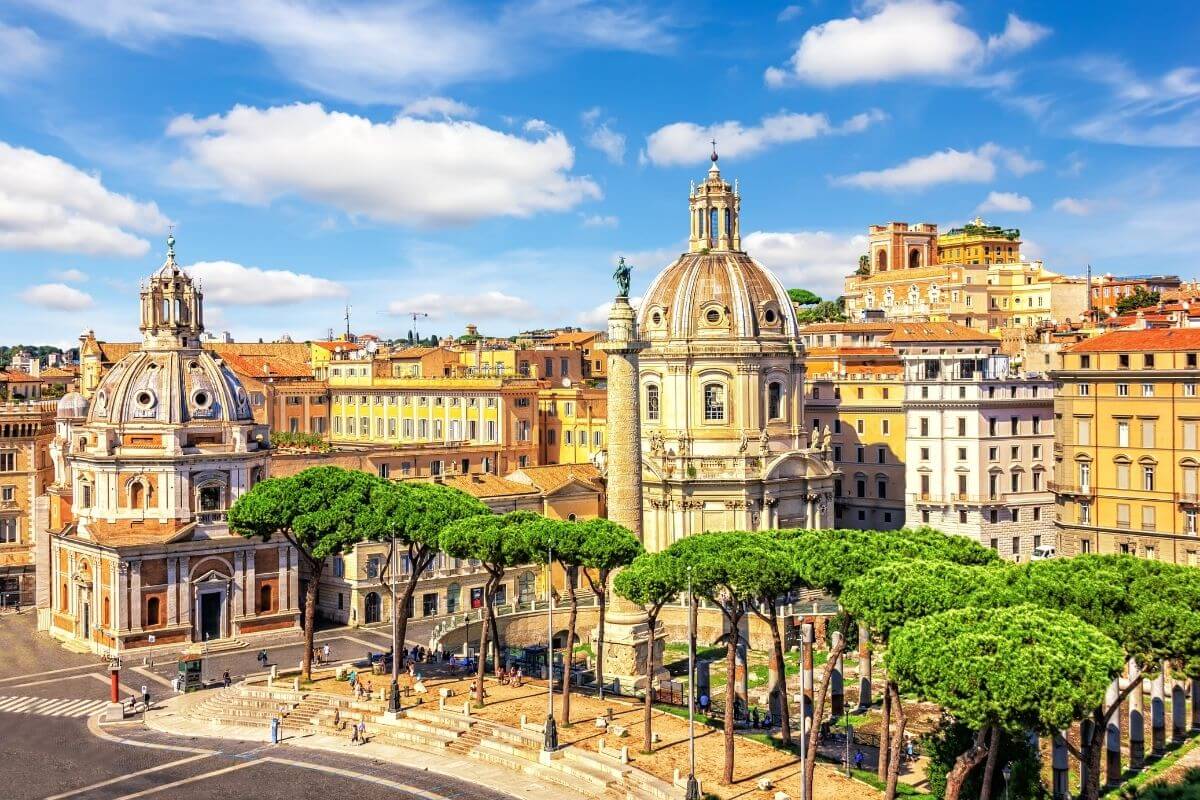
The Forum of Trajan is well preserved and worth a look on any itinerary of Rome.
Aside from the ruins of the columns of the Basilica, you will still be able to see the huge Column of Trajan which stands at a striking 38 meters tall.
Back in the day its view would have been obscured by the Basilica, but now you can see it in all its glory. You can also check out the ruins of a temple as well as Trajan’s red brick market where merchants would have sold their wares.
Top Attractions near Basilica Ulpia in Rome
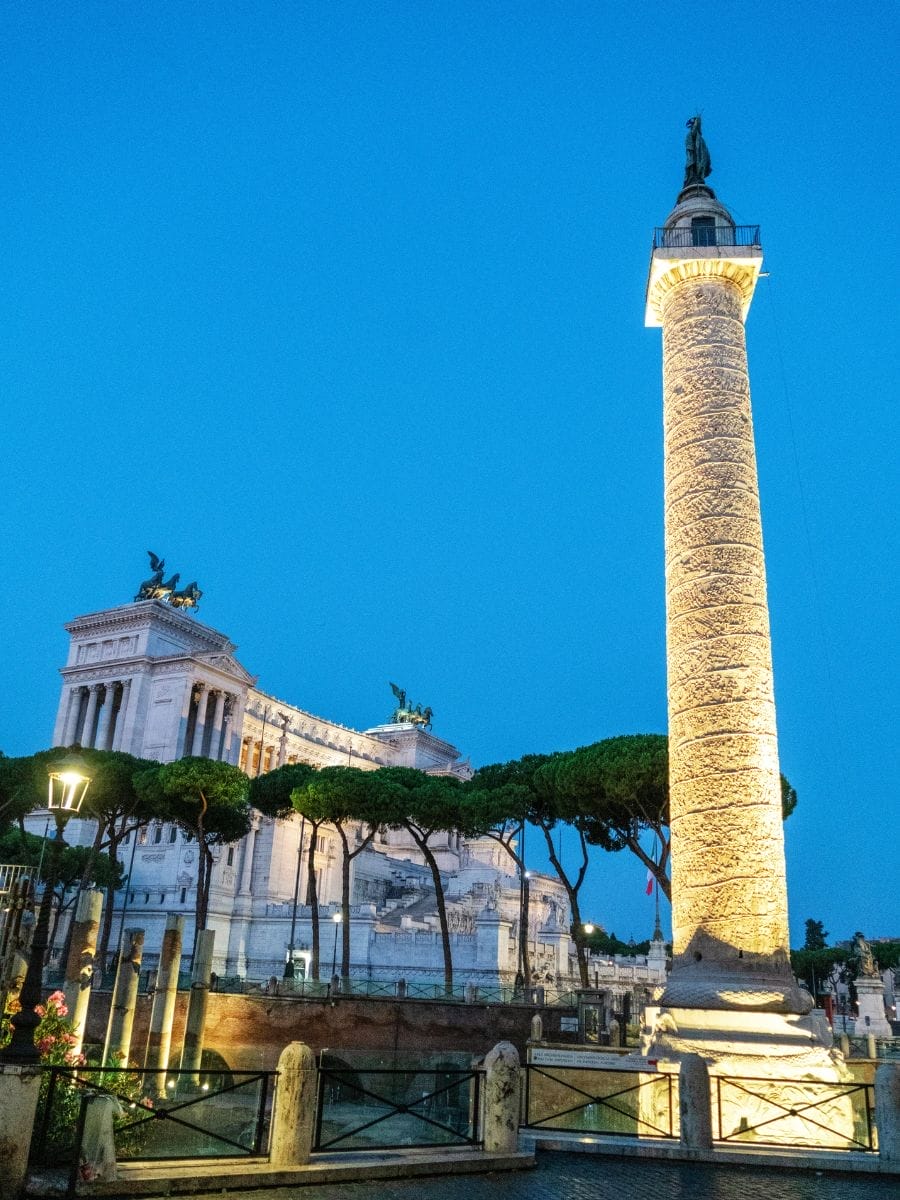
Right next to the Basilica Ulpia, you’ll find some of Rome’s most fascinating ancient sites. From grand ruins to panoramic viewpoints, this area is perfect for exploring the city’s imperial past at an easy walking pace.
- Trajan’s Market (Museo dei Fori Imperiali) – Just beside the Basilica, this multi-level complex once held shops and offices. Today it’s a museum where you can explore ancient structures and enjoy great views over the Imperial Forums.
- Trajan’s Forum – The Basilica Ulpia was part of this grand forum built by Emperor Trajan. Walk among its remains and imagine how it once connected Rome’s most impressive public spaces.
- Trajan’s Column – A short stroll away, this famous column still stands tall after nearly 2,000 years. Its spiral carvings tell the story of Trajan’s victories in the Dacian Wars, a true masterpiece in stone.
- Forum of Augustus – Just beyond Trajan’s Forum, this site features the remains of the Temple of Mars Ultor and other ancient structures from the age of Augustus. It’s especially beautiful when lit up at night.
- Roman Forum – Only a few minutes away, this was the heart of ancient Rome. Wander among temples, arches, and basilicas where politics, religion, and daily life once mixed. Entry is included with a combined ticket for the Colosseum and Palatine Hill, available online or at the gate.
- Capitoline Hill and Piazza del Campidoglio – Overlooking the Forum, this hill offers stunning views and a lovely square designed by Michelangelo. The Capitoline Museums require a ticket, and inside you’ll find stunning Roman sculptures and breathtaking city views.
- Altar of the Fatherland (Altare della Patria) – Rising above Piazza Venezia, this white marble monument honors Italy’s unification. Entry to the lower area is free, while a small ticket gives access to the panoramic terraces, one of the best viewpoints in Rome.
With so many incredible sites just steps away, visiting the Basilica Ulpia is the perfect starting point for a walk through the heart of ancient Rome.
Frequently Asked Questions

Here are the top asked questions we receive about Trajan’s Forum and the Basilica Ulpia.
When was the basilica Ulpia in Rome built?
The Basilica Ulpia was completed in 112 AD.
Which Emperor commissioned the Basilica Ulpia?
Emperor Trajan commissioned the Basilica Ulpia in a bid to show his military strength after a victory in the Dacian war. Architect Apollodorus’ Basilica Ulpia design was selected for the plans.
What colors were the marbles of the floor of the Basilica Ulpia in Trajan’s forum?
Multi colored marbles of red yellow and gray were used on the floor of the Basilica.
Conclusion
With so many ancient ruins and forums in Rome, planning your itinerary can feel overwhelming.
Consider using a Rome city pass, an easy and budget-friendly way to explore top attractions like the Basilica Ulpia, Trajan’s Forum, and the Colosseum with one convenient ticket.
Check out the best Rome city pass options and reviews to make the most of your visit to the Eternal City.
Fanny, an ardent admirer of ancient history and architecture, has been fascinated by the Colosseum since her first visit to Rome in 2012. As a key contributor to the Visit Colosseum Rome blog, she brings her passion for the Roman Empire’s monumental legacy to every article and guide.
